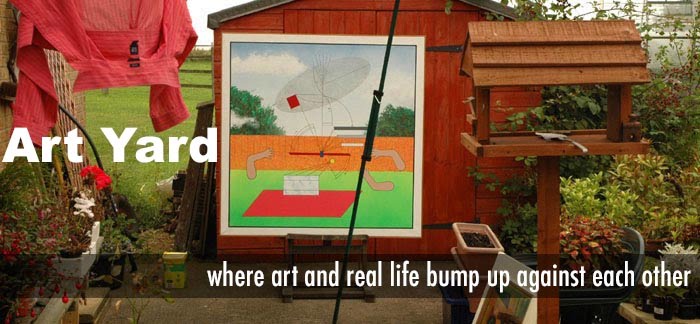 It's been a very busy second half to the Autumn Term. First Year National Diploma students keen to experiment with lots of unfamiliar techniques. They used an old Jessops Powerflash motordrive head (MD400) to strobe with their camera shutters open on B. There were the inevitable problems of overexposure sometimes when the subject didn't move far enough between flashes. I showed them how to produce a similar effect by using a motordrive to take a rapid sequence of single frames which could be layered in Photoshop and selectively blended to create a strobe-like composite image. The shot above was the first attempt. With care, I'm sure some really nice sequences could be made.
It's been a very busy second half to the Autumn Term. First Year National Diploma students keen to experiment with lots of unfamiliar techniques. They used an old Jessops Powerflash motordrive head (MD400) to strobe with their camera shutters open on B. There were the inevitable problems of overexposure sometimes when the subject didn't move far enough between flashes. I showed them how to produce a similar effect by using a motordrive to take a rapid sequence of single frames which could be layered in Photoshop and selectively blended to create a strobe-like composite image. The shot above was the first attempt. With care, I'm sure some really nice sequences could be made.
 A few of the students were curious to know about HDR (High Dynamic Range) photography, though none knew what it was. I decided to demonstrate in class, using as an example two of the students who were taking a break near the window. It was fairly late on a very dull November day and the room lights were on. With the digital camera steady on a tripod, I asked the girls to remain very still while I took two shots, one metered for them, the other metered for the scene outside. The two images are shown at the top, with burnt-out highlights coloured red and textureless shadows coloured blue.
A few of the students were curious to know about HDR (High Dynamic Range) photography, though none knew what it was. I decided to demonstrate in class, using as an example two of the students who were taking a break near the window. It was fairly late on a very dull November day and the room lights were on. With the digital camera steady on a tripod, I asked the girls to remain very still while I took two shots, one metered for them, the other metered for the scene outside. The two images are shown at the top, with burnt-out highlights coloured red and textureless shadows coloured blue.Again, I layered them in Photoshop with the indoor shot uppermost. I then carefully erased the window in this layer to expose the background scene of the lower layer. The hair was the trickiest part and there was a slight mis-registering between the layers to cope with. So, it's not perfect but I'm quite pleased with it as my own first attempt to have a go at this technique.

Another technique I've been trying to get students interested in, is pushing photograms beyond the familiar arrangements of keys and coins and other everyday items. Charity shops always have shelves of ornamental items such as the glass bowls I used for these images. Scanning the photogram and manipulating it in Photoshop, I was able create some psychedelically coloured animated .gifs.

The enlarger I used to make these photograms was in a pretty filthy condition, as I found out when I took the prints out into the daylight. The black background was covered in thousands of tiny dust specks. In this photogram, though, they looked like a myriad tiny stars, blinking away behind a baleful planet hanging there in a vast space. It seemed a logical step to colourise the scan to enhance this illusion and to add some random coloured shaped to create an imaginary perspective.

Lots of other creative ideas are developing. Having just repaired our UV exposure unit, I'm ready to roll again on cyanotypes and salt prints (always a favourite with students). Parts for an infra-red and a sound flash trigger are sitting on my workbench. And then there's stop motion animation and stereoscopic photography . . .





